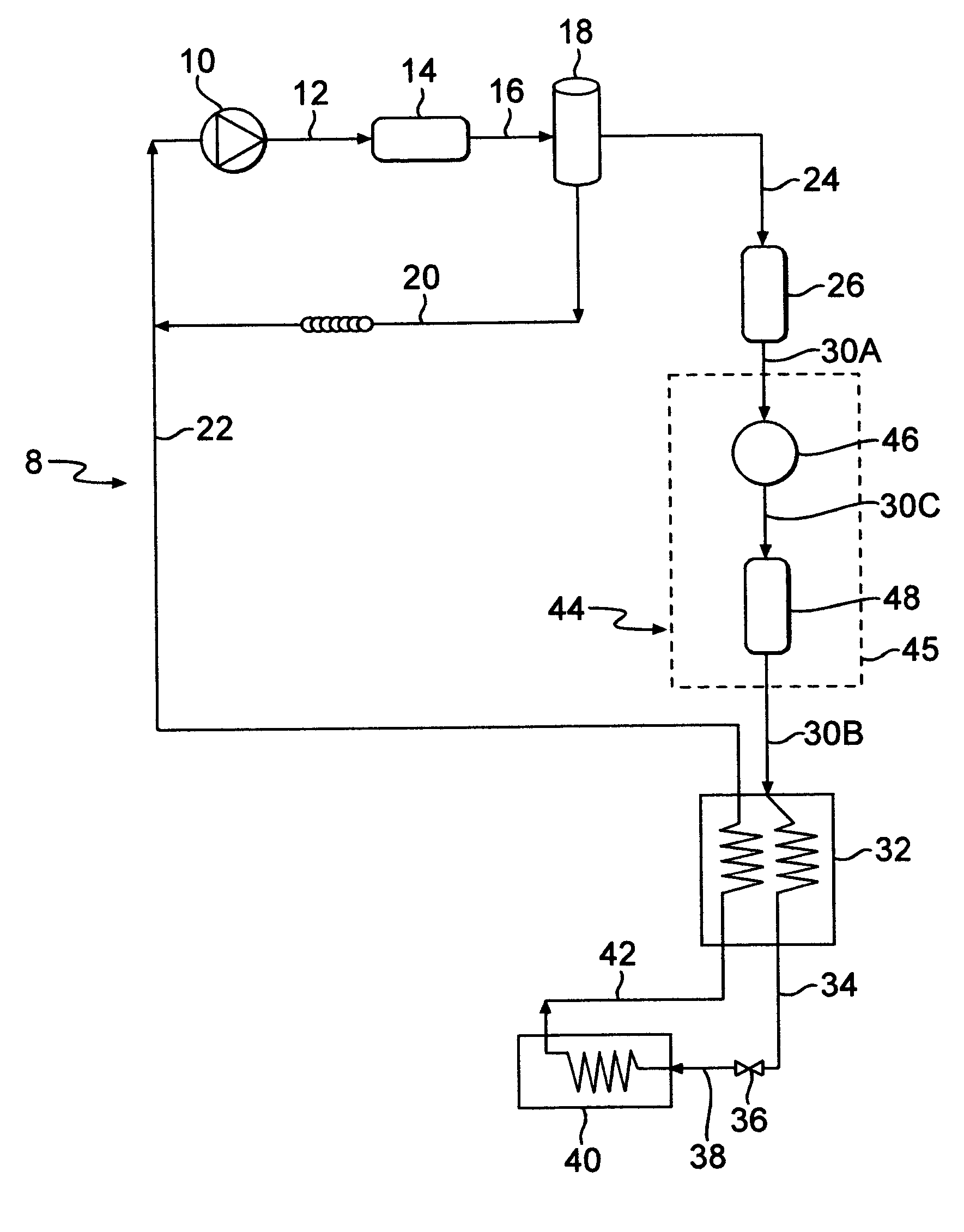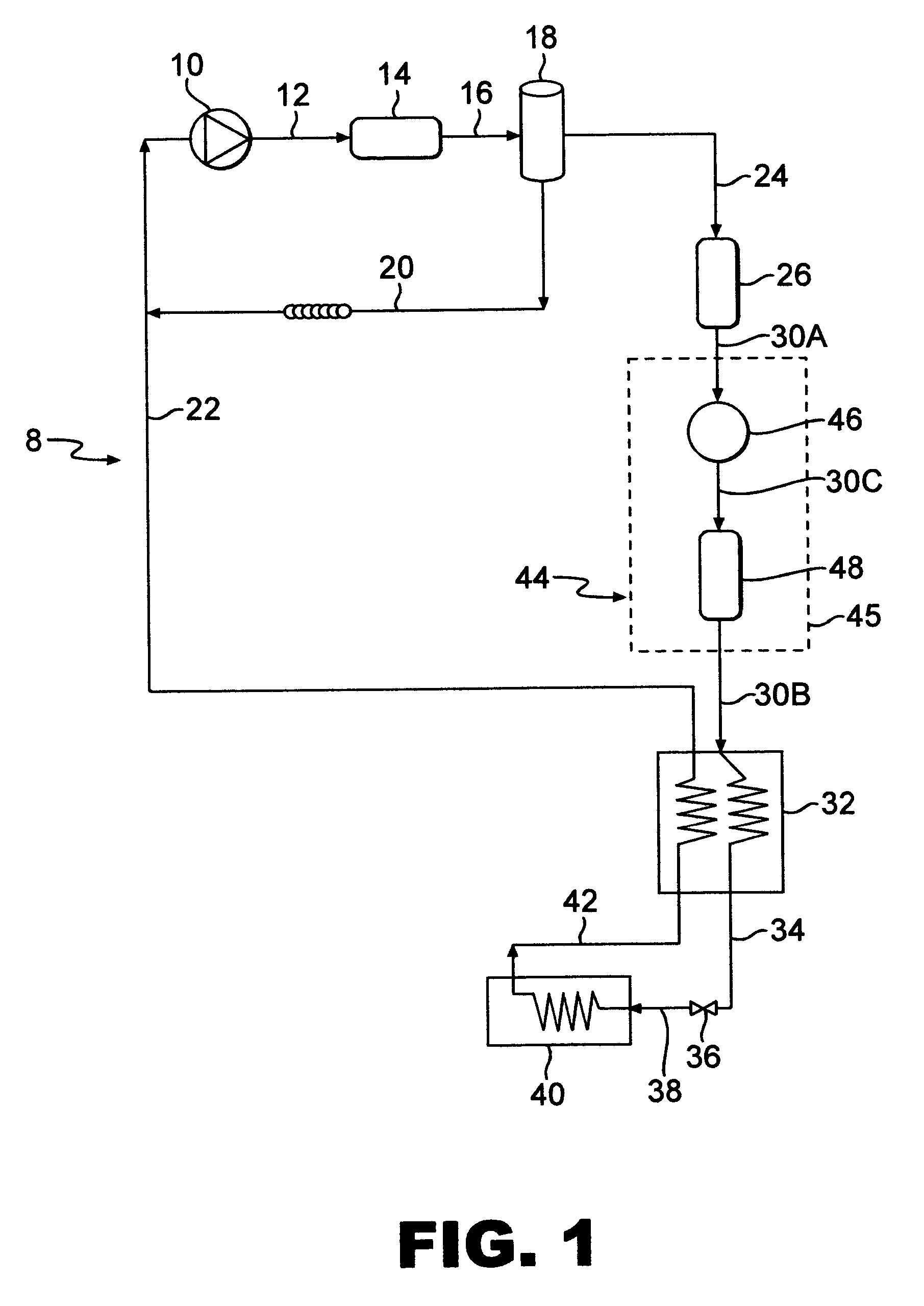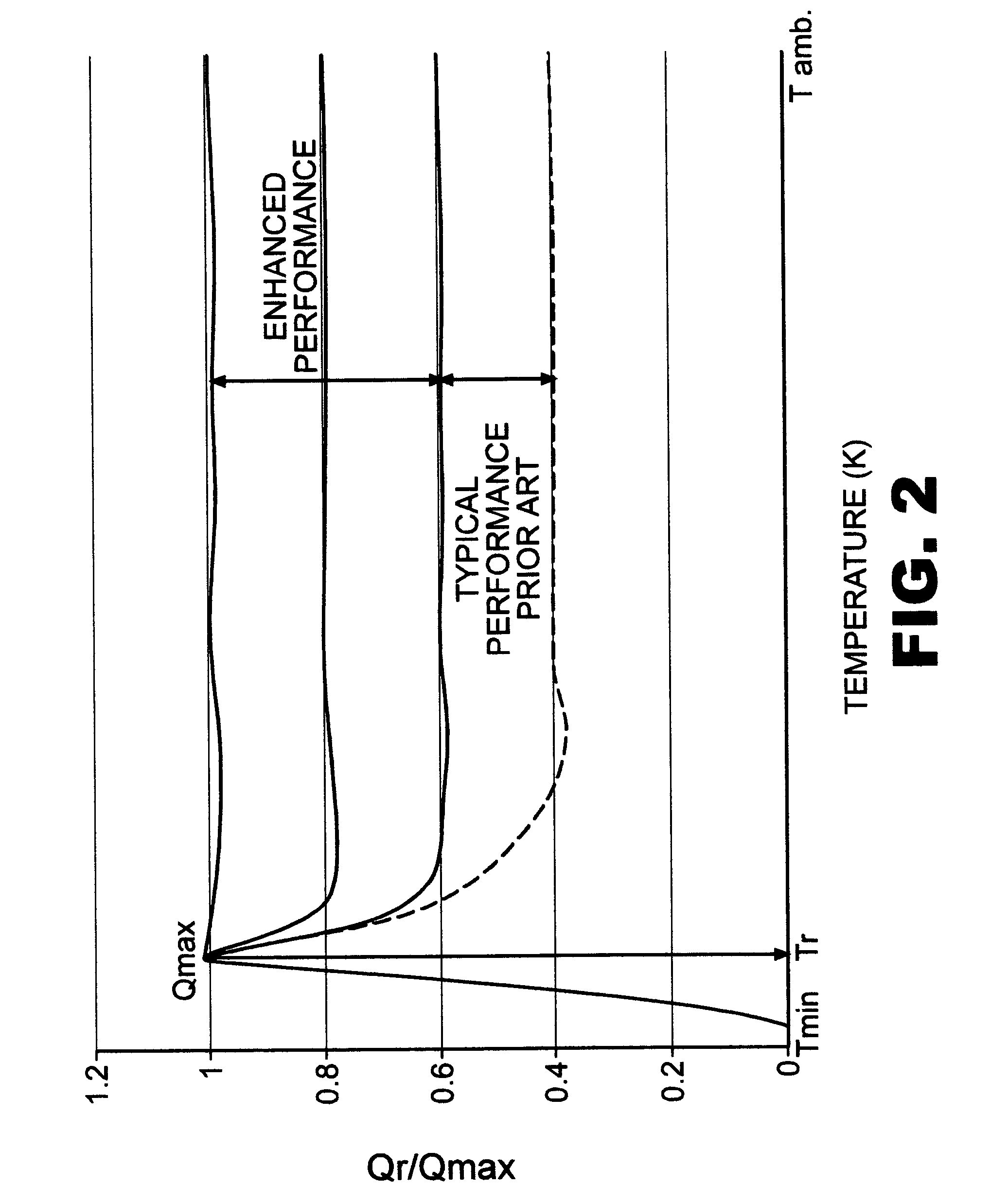Closed cycle refrigeration system and mixed component refrigerant
a closed cycle, refrigerant technology, applied in the field of refrigeration cycles, can solve the problems of difficult to find efficient and reliable systems, difficult to maintain, and require more expensive equipment and frequent maintenan
- Summary
- Abstract
- Description
- Claims
- Application Information
AI Technical Summary
Benefits of technology
Problems solved by technology
Method used
Image
Examples
examples
[0056] The following examples are illustrative of the operation and advantages of the present invention.
example i
[0057] In this Example a mixed component refrigerant of Table 4 would be employed in a closed cycle system of this invention utilizing a fixed sized capillary tube as the throttling device. The capillary tube would have an inside diameter of 0.030 inch and a length of 90 inches. The system thus designed would provide a refrigeration capacity during cooldown of about 65% of the maximum steady state refrigeration capacity when employing the specific mixed component refrigerant.
TABLE 4Melting (triple)Conc.ComponentMol. Wt.Boil. Pt., ° K.Pt., ° Kmol %Neon20.1827.226.915Nitrogen (N2)28.0277.363.235CF488145.289.335(R-14)C3F8188.02236.5125.515(R-218)
[0058] During operation of the system, more rapid cooldown from ambient temperature to the desired operating temperature in the cryogenic range below about 120° K would be achieved. This results in higher refrigeration capacity at steady state conditions.
[0059] Repeating this run using a capillary tube having an inside diameter of 0.016 inch...
example ii
[0060] Selecting another mixed component refrigerant such as described in Table 5 for the system of invention utilizing a fixed size orifice plate having an inside diameter of 0.032 inches as the throttling device would provide a refrigeration capacity during cooldown of about 75% of the maximum steady state refrigeration capacity when employing the (mixed component refrigerant) of Table 5.
TABLE 5Melting (triple)Conc.ComponentMol. Wt.Boil. Pt., ° K.Pt., ° Kmol %Helium44.23.610Nitrogen (N2)28.0277.363.230Argon39.9487.283.85CF487.97145.289.330(R-14)CHF370.0119111810(R-23)C3F8188.02236.5125.515(R-218)
[0061] The throttle device was selected to achieve greater than about 75% of the steady state refrigeration capacity during cooldown from ambient temperature. During operation of the system, more rapid cooldown from ambient temperature to the desired operating temperature below about 100° K is achieved. This results in a greater efficiency in the overall operation of the system.
[0062] T...
PUM
 Login to View More
Login to View More Abstract
Description
Claims
Application Information
 Login to View More
Login to View More - R&D
- Intellectual Property
- Life Sciences
- Materials
- Tech Scout
- Unparalleled Data Quality
- Higher Quality Content
- 60% Fewer Hallucinations
Browse by: Latest US Patents, China's latest patents, Technical Efficacy Thesaurus, Application Domain, Technology Topic, Popular Technical Reports.
© 2025 PatSnap. All rights reserved.Legal|Privacy policy|Modern Slavery Act Transparency Statement|Sitemap|About US| Contact US: help@patsnap.com



